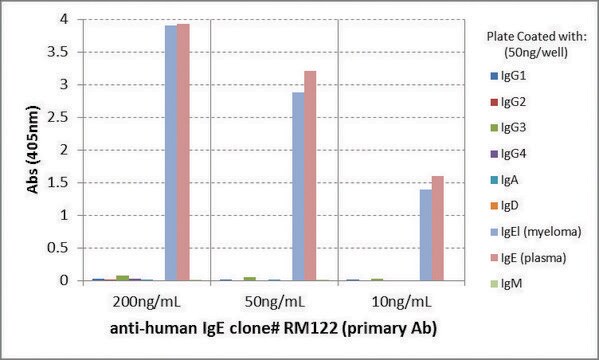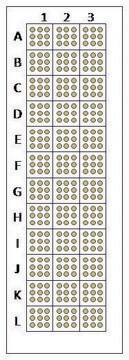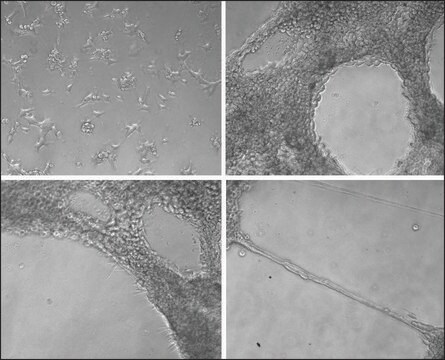CIB001
Cell-in-a-Box®
Cell Encapsulation Kit
Synonyme(s) :
Cell Culture Box
About This Item
Produits recommandés
Utilisation
(up to 5 experiments, each creating ~120 capsules, each containing between 4,000 and 40,000 cells.)
Conditions de stockage
room temperature
Description générale
The Cell-in-a-Box kit aims to replace the current methods of cell encapsulation which involve the use of large, expensive, and technologically challenging machinery. Often this is very rarely available to the average scientist in a research setting and far too expensive to purchase for initial experimentation. The unique encapsulation material also replaces commonly available encapsulation materials which have technological drawbacks. This kit version of Cell-in-a-Box represents a major leap forward in the cell encapsulation field that has remained largely stagnant for the past 30 years.
The components of The Cell-in-a-Box kit are non-toxic and biocompatible. The porous beads are approximately 2 mm in diameter and have a pore size which allows nutrients to enter and waste products and biomolecules as large as antibodies to leave the capsule unhindered yet cells are unable to pass in or out. The capsules entrap the cells securely within their polymer membranes, yet allow the cells to continue growing within the confined boundaries. Nutrients and secreted factors are able to diffuse and exchange through the membrane pores, which can be selectively tuned.
The durable encapsulation material is made of biocompatible cellulose-based material and can last for years in vitro and in vivo (although kit-made capsules are not designed for in vivo use) as well as contribute to longer cell survival periods. This kit can be tested with any kind of living cells. Encapsulated cells can be frozen, stored, and transported.
Since the proprietary cell packaging material used for the Cell-in-a-Box technology is derived from a naturally occurring material, it is thus harmless to the environment, biologically inert, and has been shown to be safe in humans.
Application
- In healthcare, it facilitates the safe implantation of cells, holding them isolated from the immune system and allowing long term production of therapeutic molecules in patients.
- In biotechnology, the Cell-in-a-Box technology protects cells in bioreactors and fermenters, while at the same time simplifying purification of bioproducts produced from the cells and reducing production costs.
- In agriculture, the Cell-in-a Box technology could help improve the survival and growth of crops, as well as to increase crop yield and to prevent spoilage.
- Enhancement of protein expression systems.
- Implantation of hybridomas in mice.
- And many more.....
The possibilities are only limited by your imagination.
Caractéristiques et avantages
- Encapsulate any type of living cell.
- Can protect, isolate, store, and transport living cells.
- Semi-permeable and semi-transparent membrane.
- Biocompatible and non-toxic.
- Cells continue to grow inside ~2 mm bead in a 3-D environment.
- Straighforward procedure takes approximately 30 minutes.
- Cells can live inside capsules for extended periods.
- Capsules protect cells from graph vs host.
Conditionnement
Informations légales
(b) Sigma Aldrich does not grant to purchaser any license, express or implied, in violation of or infringing upon any third party rights. Purchaser is responsible for determining the existence of any such third party rights and to acquire any such rights, should they exist, before using the product.
(c) Purchaser acknowledges and agrees that the product is not intended for use in humans, and agrees not to conduct research with it in humans.
Code de la classe de stockage
10 - Combustible liquids
Certificats d'analyse (COA)
Recherchez un Certificats d'analyse (COA) en saisissant le numéro de lot du produit. Les numéros de lot figurent sur l'étiquette du produit après les mots "Lot" ou "Batch".
Déjà en possession de ce produit ?
Retrouvez la documentation relative aux produits que vous avez récemment achetés dans la Bibliothèque de documents.
Les clients ont également consulté
Articles
Cell-in-a-Box® technology allows cell encapsulation using biocompatible semipermeable cellulose nanoparticles for cellular therapy and 3D cell culture applications.
Notre équipe de scientifiques dispose d'une expérience dans tous les secteurs de la recherche, notamment en sciences de la vie, science des matériaux, synthèse chimique, chromatographie, analyse et dans de nombreux autres domaines..
Contacter notre Service technique









